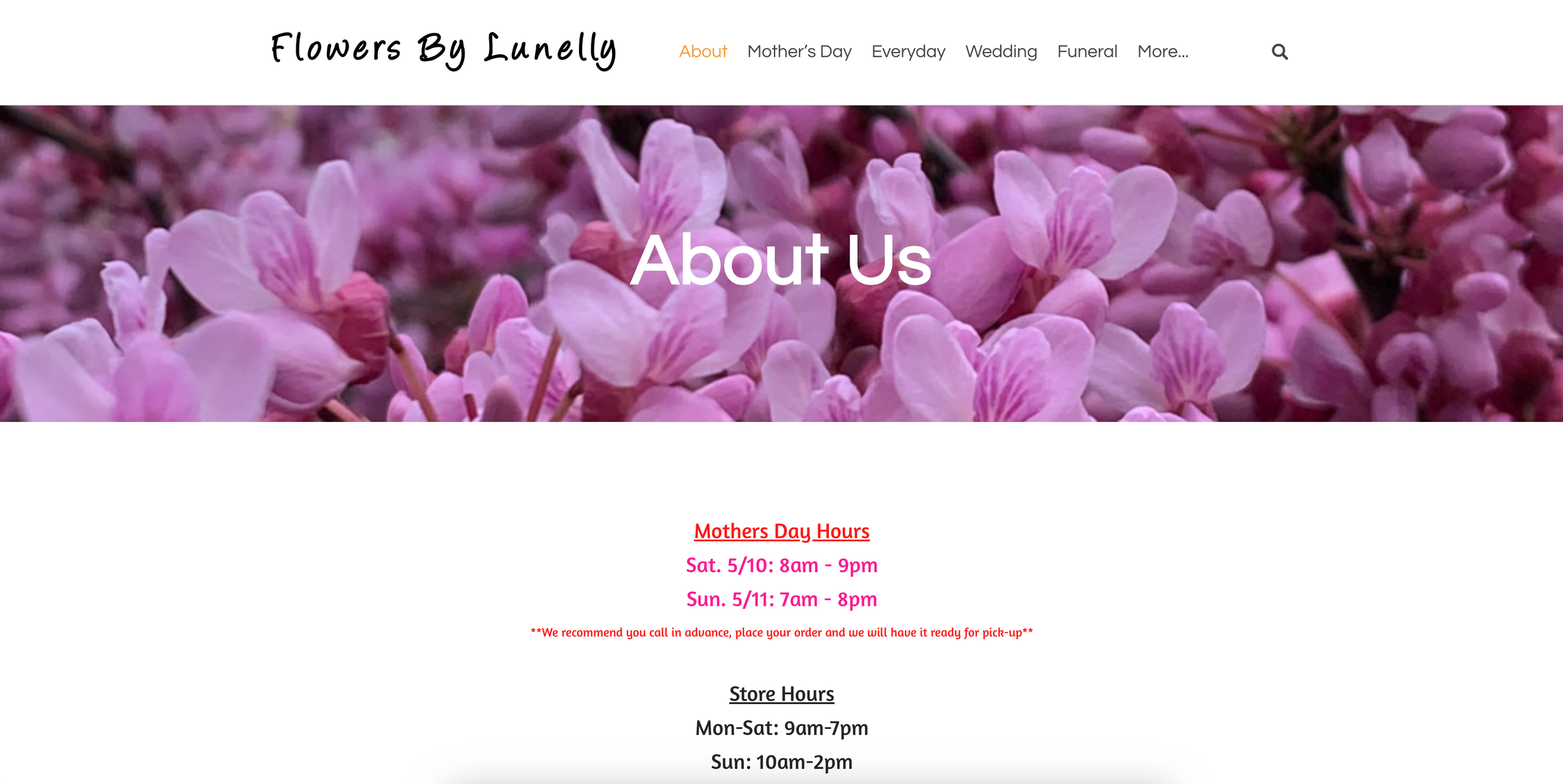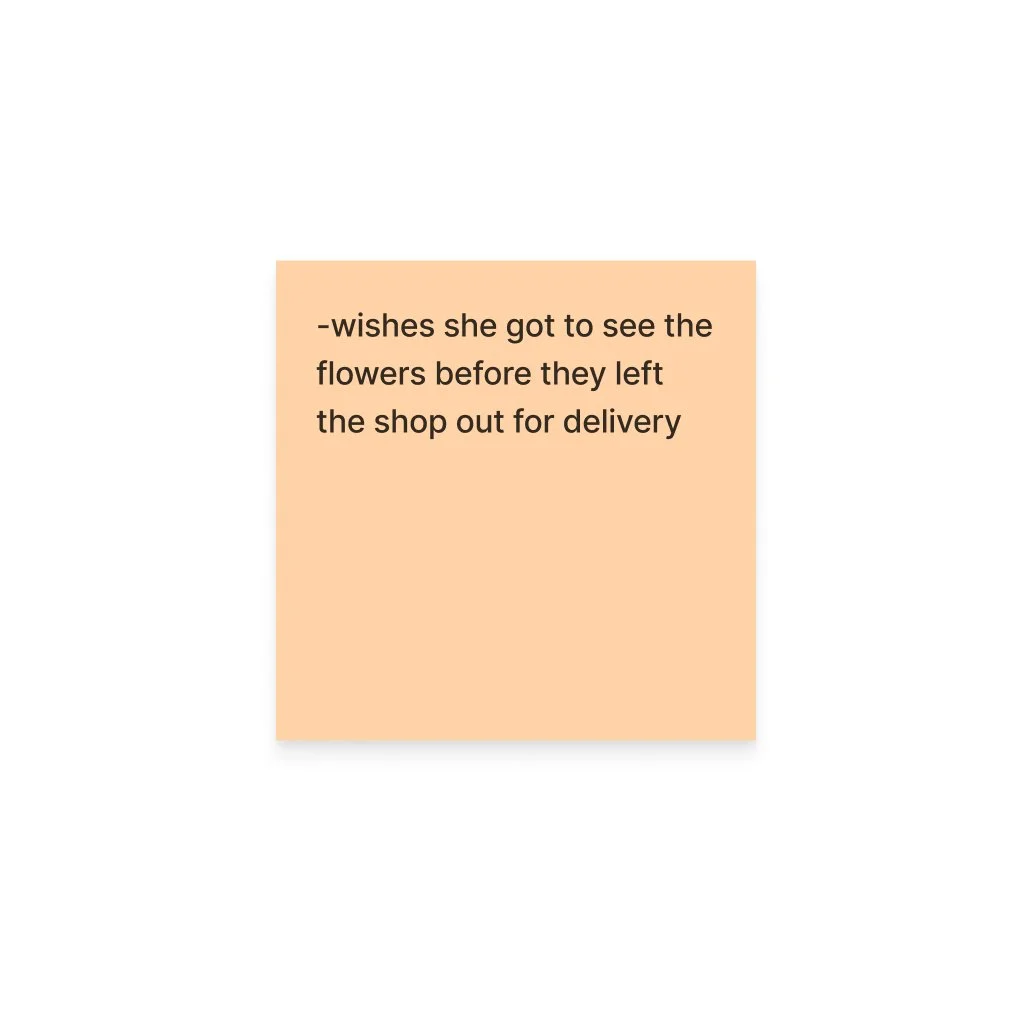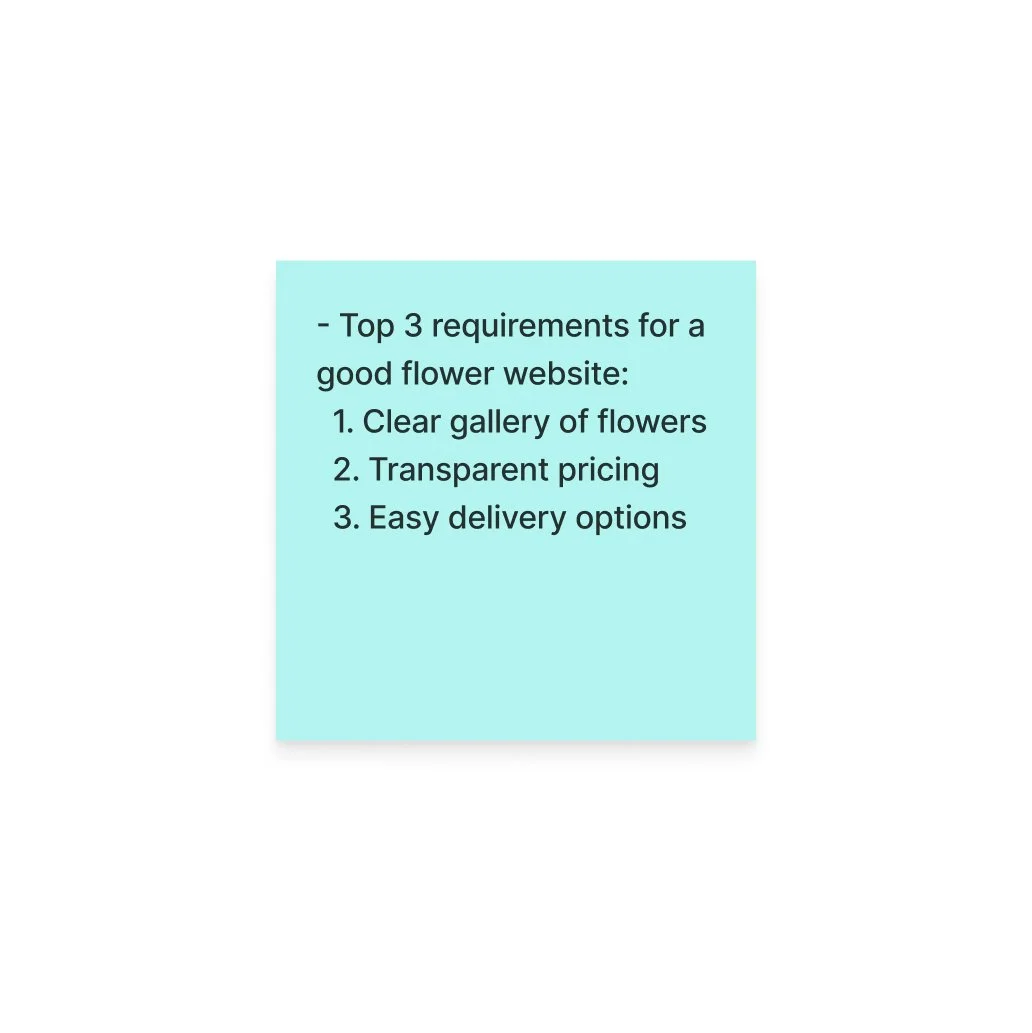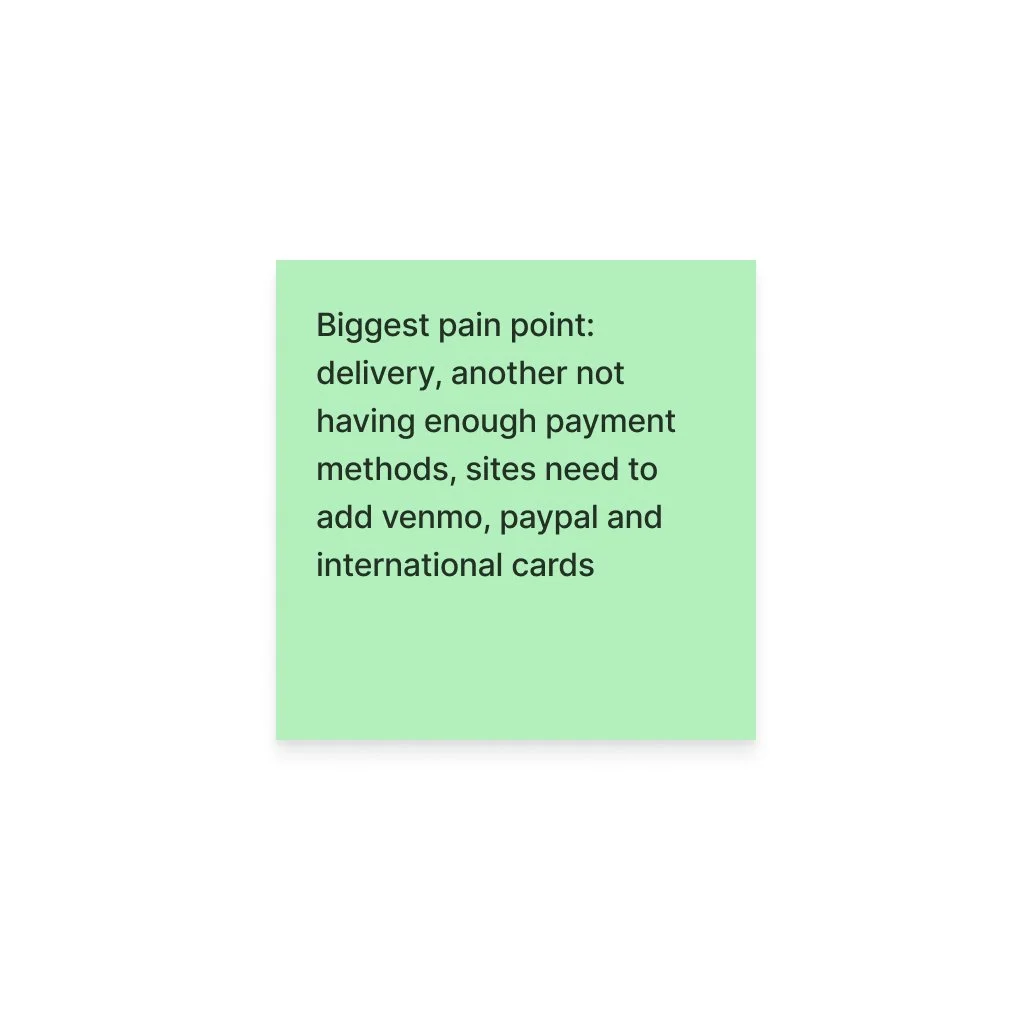Flowers by Lunelly
Outcome & Next Steps
The research revealed two distinct user types driving the business: "The Sentimental Planner," who carefully considers the emotional significance of their floral choices and values meaningful, personalized arrangements, and "The Aesthetic-first Occasional Gifter," who prioritizes visual appeal and seeks beautiful arrangements for spontaneous gifting moments. Understanding these different approaches to flower purchasing shaped a complete restructuring of the site's information architecture, organizing content around clear user flows: Shop by Occasion, Build Your Own Bouquet, Delivery & Pickup Info, and About the Business.
The solution centered on transparency and accessibility across all devices. Key features included a fully responsive layout optimized for mobile, tablet, and desktop experiences, along with inventory-aware product cards displaying essential information like pricing, delivery status, and occasion tags at a glance. The signature "Build Your Own Bouquet" flow empowered users to create personalized arrangements, while delivery information was seamlessly integrated into every step of the purchasing process. To address the trust gap, a dedicated business story section was designed to showcase the florist's personality and expertise, transforming a transactional experience into a warm, human connection.
Digital storefront, real revenue…
For this project, I recruited users who had previous experience shopping online at florist sites.
I asked them to look through the current site for Flowers by Lunelly and walk me through their thoughts and expectations.
To put it simply, they left with more questions than answers.
Research & Insights
In addition to a competitive analysis of other florists, I discussed some of my interviewees' best and worst experiences when shopping for flowers online…
Define
User Testing
Key Findings:
-Users were frustrated by the lack of pricing and availability info.
-Many felt unsure about what was actually in stock or whether items were available for delivery or pickup.
-The emotional aspect of gifting flowers was missing from the digital experience.
-Users were often looking for guidance, personalization, or reassurance in delivery reliability.
-These insights became the backbone of the design: people needed clarity, confidence, and reassurance.
Redesigning a local florist's website to enhance mobile usability and customer confidence while preserving the brand's vibrant personality—from user research to high-fidelity prototype.
Timeline:
Role:
UX / UI Designer
4 weeks
In addition to being thrown off by the design and landing on the “About Us” page, users were:
confused by the photo galleries with little to no info, no pricing
expected a call to action somewhere in their online experience
confused about which flowers or services they specialized in, seemed all over the place
Tools Used:
Calendly
Google Meet
Otter
Figma
FigJam
Maze
Through extensive research, a clear picture emerged of Flowers by Lunelly's core challenge. While the florist's stunning visuals and distinctive brand personality successfully draw visitors in, the website itself creates a frustrating disconnect—leaving users with unanswered questions just when they're ready to make a purchase. This gap between beautiful first impressions and practical usability was actively undermining trust and limiting online conversions.
Wireframing to Prototype
Translating strategic UX goals into visual systems became the most rewarding part of the process. The visual strategy centered on creating an elegant, human experience through a soft pink and vibrant floral color palette, playful serif headers balanced with clean body text, and carefully curated hero shots that emphasized emotional connection over product photography.
The design evolved through iterative wireframing—starting with lo-fi layouts to test core flows, progressing through mid-fi iterations that refined the product cards and custom bouquet builder, and culminating in hi-fi designs that prioritized clean hierarchy, accessible typography, and mobile-first responsiveness. Each stage brought the florist's warm personality closer to the surface while solving the fundamental usability challenges uncovered in research.
Validation came through both moderated sessions and remote Maze testing, focusing on three critical questions: Could users easily find same-day delivery options? Did the custom bouquet builder inspire confidence? And most importantly, did the experience create an emotional connection?
The results were encouraging. Users embraced the Build Your Own flow but needed clearer intuitive tagging like "Seasonal" or "Best for Birthdays" to navigate choices confidently. Adding specific delivery windows—"Same-Day Available if ordered before 2pm"—dramatically improved purchase confidence. Most rewarding was seeing users connect with the florist's story, which transformed their perception from transactional to personal, building the trust that had been missing from the original experience.
After the first round of Hi-Fi testing, users recommended I change the design of the “Build Your Own Bouquet” format a bit in addition to some small style changes.
The redesign transformed Flowers by Lunelly from a simple online shop into a comprehensive service experience rooted in trust, creativity, and emotional connection. The solution successfully bridged the gap between the florist's beautiful brand and practical user needs, creating pathways for both thoughtful planners and spontaneous gifters.
Moving forward, the focus shifts to implementation through partnership with the business on inventory and order management systems, rapid prototyping via Shopify or Squarespace, and future enhancements like personalization tools exploring flower meanings or zodiac-inspired arrangements. A delivery tracking feature would complete the transparency users craved, ensuring the experience remains seamless from selection to doorstep.













